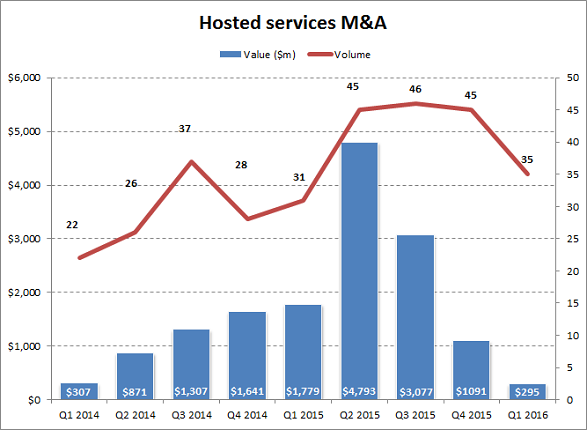Contact: Mark Fontecchio
Qlik, widely discussed as a potential target, has gone private, selling to private equity (PE) firm Thoma Bravo. The price tag is $3bn, making it the largest analytics acquisition we’ve seen and the biggest in BI since a trio of firms were taken off the market nearly a decade ago.
The enterprise value – 4.2x Qlik’s trailing revenue – comes in below the 4.7x median for all $1bn+ BI deals in the past decade, according to 451 Research’s M&A KnowledgeBase. The difference in this case is the buyer. All other $1bn+ BI transactions were done by strategic, not financial, acquirers. Thoma Bravo and other PE shops typically don’t offer valuations as rich as strategic buyers. It’s also worth noting that this is the second-highest multiple Thoma Bravo has paid on a $1bn+ purchase – the largest was 9.1x for SolarWinds last year, a deal it did in concert with Silver Lake Partners.
In many ways, Qlik is in a stronger position as a private company than it was operating as public one. Its strategy of crafting an analytics platform to cater to the dual and often conflicting needs of IT and business users is a solid one. But it needs further execution. Fulfilling it without the quarterly scrutiny that goes with being publicly traded should provide Qlik with the chance to win back some of the momentum it has lost, as the core market in which it has operated has been swamped by competitors.
Goldman Sachs advised Thoma Bravo on the transaction, while Morgan Stanley banked Qlik.
Four biggest BI acquisitions
|
Source: 451 Research’s M&A KnowledgeBase
For more real-time information on tech M&A, follow us on Twitter @451TechMnA.


![Vonage_copy[1]](http://blogs.451research.com/techdeals/files/2016/05/Vonage_copy1.png)
![Alibaba_active_buyers_copy[1]](http://blogs.451research.com/techdeals/files/2016/04/Alibaba_active_buyers_copy1.png)
